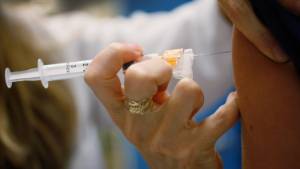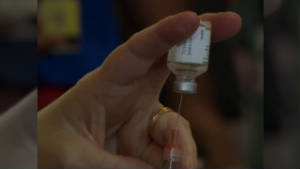Lewis
Member
Ethicist: We need safer drugs for our kids
By Harriet A. Washington,Thu May 3, 2012

STORY HIGHLIGHTS
What if most of the drugs your doctor gave you were untested, forcing him or her to guess at the correct medication and dosage -- making you an unwitting research subject whenever you took a pill?
Dr. Florence Bourgeois and her colleagues at Harvard University have just reminded us that today, this very situation confronts the world's children.
Four of every five kids hospitalized in the United States are treated with drugs that have never been tested in them, according to Bourgeois' report in this week's Pediatrics journal. They are approved by the Food and Drug Administration only for adults. And outside the hospital, one-third of all children take such medications.
Doctors can legally use such drugs, but determining a safe, effective dose -- if there is one -- can be a matter of guesswork, because little ones can metabolize drugs very differently than adults.
For instance, the cheap broad-spectrum antibiotic chloramphenicol, used most frequently in low-income countries, can debilitate infants, causing vomiting, low blood pressure and impaired heart function in a rare but often fatal "gray-baby syndrome." And debate rages over whether antipsychotic drugs that mute the ravages of mental illness in adults can damage the developing brains of children to whom they are prescribed.
 Study: 10% of kids improperly vaccinated
Study: 10% of kids improperly vaccinated
 Vaccine schedule for children
Vaccine schedule for children
A child is not a Mini-Me, but according to Bourgeois' report, we tend to act as if kids are because drug trials conducted in children are too few, of poor quality and too often focus on medications that are important for disorders of adults, not children.
Why don't drug companies test more medications in children? Bourgeois suggests that the small size of the market and the difficulties of meeting heightened ethical constraints for children may play a role.
It's true that children typically lack the comprehension and judgment needed to give informed consent, so parents and guardians must render consent for them. Also, healthy children cannot be legally enrolled in studies that pose more than a minimal risk.
But in practice these have not proved to be a barrier for research because parents tend to give consent even when they don't properly understand studies; and "minimal risk" has been defined quite liberally, including the administration of drugs such as fenfluramine, which has have been shown to induce heart injury in adults.
It is more likely, suggests an analysis by the European Molecular Biology Organization, that drug companies don't test drugs in children because it is not cost-effective: They already sell plenty of adult drugs for use in children, and the expense of mounting clinical trials for these drugs would not raise their profits. (Moreover, companies stand to lose income should the test reveal some special vulnerability in children that makes their drug unsuitable.)
Instead, adult medicines gradually find their way into pediatric practice as more pediatricians experiment with giving them to their patients.
This hazard is well-known among doctors, but the Pediatrics report is important because it "quantifies the shortcomings," Bourgeois says. Using the research registry Clinicaltrials.gov, she reports that although children suffer 59% of disease, only 12% of clinical trials are pediatric; medications needed by children indeveloping countries are the least likely to be tested; and that 65% of all adult trials are funded by industry funding, as opposed to 41% of pediatric trials.
The study does children and their doctors an important service. However, it also expresses concern that the makers of drugs need to take a key role in testing. Bourgeois' paper invokes the dire straits of children in poor countries, who are least likely to have access to properly tested drugs, and makes a case for promoting pharmaceutical-industry leadership in the needed drug testing.
Yet according to the New England Journal of Medicine, one in three clinical trials funded by the pharmaceutical industry are now conducted abroad in developing countries, where they are completed more cheaply, more quickly and at a higher level of quality than those conducted in the United States and Europe. A top-tier academic medical center in India charges about $1,500 per subject, compared with the $20,000 charged by second-rate centers in the United States, largely due to the cheaper labor of the Third World, according to the journal.
So the pharmaceutical industry already conducts many studies abroad because it is in their financial interests to do so.
Yet the Pediatrics report urges industry incentives to make pediatric drug research lucrative despite its "small market share." This plea ignores the fact that pharmaceutical companies already reap financial rewards for conducting pediatric research.
Under the Best Pharmaceuticals for Children Act of 2002, a company that conducts successful clinical trials in children, will receive an additional six months of patent life for the medication. When Claritin was so tested, it garnered more than $500,000 in sales for its maker.
Pharmaceutical companies explain the reluctance to clinical trials by pointing to a 2001 Tufts University study that claims each approved drug costs them $800 million to test, and more recent studies have said that total is upward of $2 billion for each new pill.
However, experts have contested this assertion, including financial writer Merrill Goozner, who points out in his book "The $800 Million Pill: The Truth Behind the Cost of New Drugs," that this figure in fictitious, inflated by theselection of expensive but rare and unrepresentative drug studies; the figure fails to account for the drug industry's hefty tax rebates and uses an inappropriate economic device called the "opportunity cost" that doubled the figure, he writes.
But can the pharmaceutical industry best guide children's medical research?
When research is funded by the pharmaceutical industry, the medical journal findings exhibit a bias toward the interests of the sponsoring company. A study in the Journal of the American Medical Association by Drs. Paul M. Ridker and Jose Torres found that 67%of industry-sponsored trials published between 2000 and 2005 in the most influential publications favored the sponsoring company's drugs and devices.
By contrast, trials funded by nonprofits were as likely to support the drugs or devices as to oppose them, and studies that combined industry funding with nonprofit support fell between the two on the spectrum, with 57% offering favorable results.
Bourgeois warns that this doesn't mean industry studies are biased and unreliable: "There are a number of other factors that could explain this: Perhaps it is the selection of trials they fund."
Given this history, can we trust industry to put the welfare of children ahead of the bottom line? It is my belief that leadership would better come from organizations such as the Global Alliance for Vaccines and Immunisation, the World Health Organization, the U.N. Foundation and the Gates Foundation, which have demonstrated that they are able to work with industry to address the developing world's need for better medicines.
These nonprofits should lead new research initiatives as well because the health of the world's children is too important to be bought and sold.
CNN
By Harriet A. Washington,Thu May 3, 2012

STORY HIGHLIGHTS
- Report: Four of every five kids hospitalized treated with drugs that haven't been tested
- Drug trials conducted in kids are too few and are often of poor quality, writer says
- When the pharmaceutical industry funds research, the findings exhibit a bias, she says
- Editor's note: Harriet A. Washington is a medical ethicist, a former research fellow at Harvard Medical School and the author of two books, "Medical Apartheid" and "Deadly Monopolies."
What if most of the drugs your doctor gave you were untested, forcing him or her to guess at the correct medication and dosage -- making you an unwitting research subject whenever you took a pill?
Dr. Florence Bourgeois and her colleagues at Harvard University have just reminded us that today, this very situation confronts the world's children.
Four of every five kids hospitalized in the United States are treated with drugs that have never been tested in them, according to Bourgeois' report in this week's Pediatrics journal. They are approved by the Food and Drug Administration only for adults. And outside the hospital, one-third of all children take such medications.
Doctors can legally use such drugs, but determining a safe, effective dose -- if there is one -- can be a matter of guesswork, because little ones can metabolize drugs very differently than adults.
For instance, the cheap broad-spectrum antibiotic chloramphenicol, used most frequently in low-income countries, can debilitate infants, causing vomiting, low blood pressure and impaired heart function in a rare but often fatal "gray-baby syndrome." And debate rages over whether antipsychotic drugs that mute the ravages of mental illness in adults can damage the developing brains of children to whom they are prescribed.


A child is not a Mini-Me, but according to Bourgeois' report, we tend to act as if kids are because drug trials conducted in children are too few, of poor quality and too often focus on medications that are important for disorders of adults, not children.
Why don't drug companies test more medications in children? Bourgeois suggests that the small size of the market and the difficulties of meeting heightened ethical constraints for children may play a role.
It's true that children typically lack the comprehension and judgment needed to give informed consent, so parents and guardians must render consent for them. Also, healthy children cannot be legally enrolled in studies that pose more than a minimal risk.
But in practice these have not proved to be a barrier for research because parents tend to give consent even when they don't properly understand studies; and "minimal risk" has been defined quite liberally, including the administration of drugs such as fenfluramine, which has have been shown to induce heart injury in adults.
It is more likely, suggests an analysis by the European Molecular Biology Organization, that drug companies don't test drugs in children because it is not cost-effective: They already sell plenty of adult drugs for use in children, and the expense of mounting clinical trials for these drugs would not raise their profits. (Moreover, companies stand to lose income should the test reveal some special vulnerability in children that makes their drug unsuitable.)
Instead, adult medicines gradually find their way into pediatric practice as more pediatricians experiment with giving them to their patients.
This hazard is well-known among doctors, but the Pediatrics report is important because it "quantifies the shortcomings," Bourgeois says. Using the research registry Clinicaltrials.gov, she reports that although children suffer 59% of disease, only 12% of clinical trials are pediatric; medications needed by children indeveloping countries are the least likely to be tested; and that 65% of all adult trials are funded by industry funding, as opposed to 41% of pediatric trials.
The study does children and their doctors an important service. However, it also expresses concern that the makers of drugs need to take a key role in testing. Bourgeois' paper invokes the dire straits of children in poor countries, who are least likely to have access to properly tested drugs, and makes a case for promoting pharmaceutical-industry leadership in the needed drug testing.
Yet according to the New England Journal of Medicine, one in three clinical trials funded by the pharmaceutical industry are now conducted abroad in developing countries, where they are completed more cheaply, more quickly and at a higher level of quality than those conducted in the United States and Europe. A top-tier academic medical center in India charges about $1,500 per subject, compared with the $20,000 charged by second-rate centers in the United States, largely due to the cheaper labor of the Third World, according to the journal.
So the pharmaceutical industry already conducts many studies abroad because it is in their financial interests to do so.
Yet the Pediatrics report urges industry incentives to make pediatric drug research lucrative despite its "small market share." This plea ignores the fact that pharmaceutical companies already reap financial rewards for conducting pediatric research.
Under the Best Pharmaceuticals for Children Act of 2002, a company that conducts successful clinical trials in children, will receive an additional six months of patent life for the medication. When Claritin was so tested, it garnered more than $500,000 in sales for its maker.
Pharmaceutical companies explain the reluctance to clinical trials by pointing to a 2001 Tufts University study that claims each approved drug costs them $800 million to test, and more recent studies have said that total is upward of $2 billion for each new pill.
However, experts have contested this assertion, including financial writer Merrill Goozner, who points out in his book "The $800 Million Pill: The Truth Behind the Cost of New Drugs," that this figure in fictitious, inflated by theselection of expensive but rare and unrepresentative drug studies; the figure fails to account for the drug industry's hefty tax rebates and uses an inappropriate economic device called the "opportunity cost" that doubled the figure, he writes.
But can the pharmaceutical industry best guide children's medical research?
When research is funded by the pharmaceutical industry, the medical journal findings exhibit a bias toward the interests of the sponsoring company. A study in the Journal of the American Medical Association by Drs. Paul M. Ridker and Jose Torres found that 67%of industry-sponsored trials published between 2000 and 2005 in the most influential publications favored the sponsoring company's drugs and devices.
By contrast, trials funded by nonprofits were as likely to support the drugs or devices as to oppose them, and studies that combined industry funding with nonprofit support fell between the two on the spectrum, with 57% offering favorable results.
Bourgeois warns that this doesn't mean industry studies are biased and unreliable: "There are a number of other factors that could explain this: Perhaps it is the selection of trials they fund."
Given this history, can we trust industry to put the welfare of children ahead of the bottom line? It is my belief that leadership would better come from organizations such as the Global Alliance for Vaccines and Immunisation, the World Health Organization, the U.N. Foundation and the Gates Foundation, which have demonstrated that they are able to work with industry to address the developing world's need for better medicines.
These nonprofits should lead new research initiatives as well because the health of the world's children is too important to be bought and sold.
CNN
Last edited by a moderator:








 You're OK in my book, bro. I enjoy your posts. :D
You're OK in my book, bro. I enjoy your posts. :D